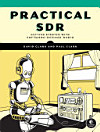Self-similarity in Walsh Functions and in the Farfield Diffraction Patterns of Radial Walsh Filters
About this ebook
About the author
A B.Sc. (Hons) Physics graduate and postgraduate of Applied Physics with a doctorate from the University of Calcutta, Kolkata. Prof. Lakshminarayan Hazra has over four decades of academic and industrial experience. He is an Emeritus Professor and Former Head of the Department of Applied Optics and Photonics at the University of Calcutta, Kolkata, India. His areas of professional specialization include lens design/optical system design, image formation & aberration theory, diffractive optics, and optical and photonic instrumentation. He is a Fellow of the Optical Society of America, and the International Society for Optics and Photonics (SPIE). He is the Editor-in-Chief of the archival journal, Journal of Optics, published by M/s Springer in collaboration with the Optical Society of India. He has published more than 150 journal articles and books.
Pubali Mukherjee holds B.Sc. (Hons.), M. Tech. and Ph.D. degrees, all from the University of Calcutta. Currently, she is an Assistant Professor in Electronics and Communication Engineering Department at the MCKV Institute of Engineering, Howrah, West Bengal, India. She has 10 years of teaching and 5 years of research experience. Her areas of interest include optical systems, image assessment criteria and diffraction pattern tailoring using phase filters and applications. She has published many papers in journals and conference proceedings.




